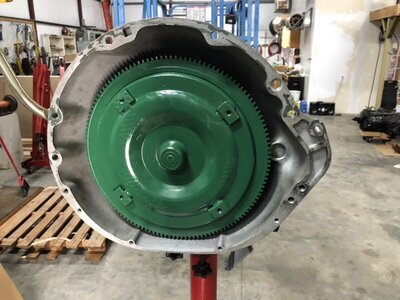Steve Wood
Member
Does anyone have an actual pad depth below the bell housing mounting surface when the converter is properly seated?
Munroe, in his book, says 0.500" is the depth. Online I have seen people state that it should be more like 0.70-.75".
I am not sure what mine is at the moment but I only have about 0.010" or so clearance at the moment to the flexplate. I used a new flexplate (440source HD) and a new PTC converter.
Prior, in a different car, there was about the usual 1/8" clearance with a different flexplate and a different (same model) PTC converter.
Due to a cracked tail housing mount and the lack of a linkage mounting boss on the case of the current transmission, we decided to install a new transmission. Before we get under the car and install the new set up, I would like to know if I have a problem with the new converter, new flexplate, or did I simply not get the converter all the way in even tho it felt normal on install. It feels like it is engaged. The old transmission is still in the car so I can not do my own measurements on it as of yet.
Munroe, in his book, says 0.500" is the depth. Online I have seen people state that it should be more like 0.70-.75".
I am not sure what mine is at the moment but I only have about 0.010" or so clearance at the moment to the flexplate. I used a new flexplate (440source HD) and a new PTC converter.
Prior, in a different car, there was about the usual 1/8" clearance with a different flexplate and a different (same model) PTC converter.
Due to a cracked tail housing mount and the lack of a linkage mounting boss on the case of the current transmission, we decided to install a new transmission. Before we get under the car and install the new set up, I would like to know if I have a problem with the new converter, new flexplate, or did I simply not get the converter all the way in even tho it felt normal on install. It feels like it is engaged. The old transmission is still in the car so I can not do my own measurements on it as of yet.
















